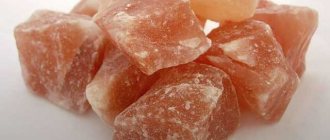Each nation has its own numerous traditions. In Rus', a special place is occupied by the tradition of “going to the bathhouse.” This is not just ablution - it is a ritual directly related to the history of Rus' and appeared long before the Slavs. Thanks to the chronicler Herodotus, we learned that the bathhouse appeared in the times of tribal communities. So, BC, in the 5th century, on the territory of tribes living in the Northern Black Sea region, the chronicler saw something resembling a hut with a vat installed in it, into which red-hot stones were thrown. This was similar to the first bathhouse, which was subsequently improved. Another famous chronicler, Nestor, described a bathhouse on the territory of Kievan Rus in “The Tale of Bygone Years,” which tells us how ancient the bathhouse was in Rus', built in those distant times from bricks and logs.
Russian bath: history and traditions
How the history of Kievan Rus is connected with the bathhouse
Thus, the bathhouse appeared in Rus' long before the Slavs. According to the testimony of the above-mentioned Herodotus, the ancient Scythians (approximately the 6th century BC) knew how to build baths and knew the mystery of bath procedures. They often arranged something similar to a camp bathhouse. There they washed, relaxed after exhausting work and simply rested, and some received treatment. The Scythians covered the poles with felt, after which they fastened them together to form a kind of hut. Then they brought in a metal vat with hot stones, on which hemp seeds were thrown, from which pleasantly smelling steam immediately came out. This was the adobe treatment from healing vapors.
How to properly use essential oils in a bath
Chronicle of Herodotus
From the chronicle of Herodotus: “Compared to the Scythian bathhouse, the Hellenic bathhouse is nothing at all. While enjoying their bath, the Scythians simply scream with happiness and pleasure.” Scythian women then made something similar to a modern scrub. Before they started steaming in the bathhouse, they ground pieces of pine needles and bark of cedar, cypress and other plants with a pleasant smell on the stones. A little water was poured into this powder to obtain a homogeneous thick mass with a very pleasant aroma. According to Herodotus, women rubbed their entire body with this mixture, then washed it off, and the body became clean and shiny.
Information from “The Tale of Bygone Years”
In the famous “Tale of Bygone Years,” which was compiled by the chronicler Nestor the monk of the Kiev Pechersk Monastery (the latest edition that has reached us dates back to 1113), there is confirmed information about baths in Rus'. From this historical manuscript of Nestor, it became clear that the bathhouse was a completely common occurrence in Rus' long before the 12th century. In the book “The Tale of Bygone Years” there is an interesting story about how the Apostle Andrew went to the lands of the Slavs. According to legend, Saint Andrew came to the Kiev hill near the bank of the Dnieper River (the place where the wonderful and majestic St. Andrew’s Church is now located) and began to preach the Word of God there. After which he went down the hill and went upstream of the river. This way he moved towards the north so far that he came to the city where modern Novgorod is now located.
How to insulate the ceiling in a bathhouse
Andrei saw a picture that struck his imagination: people were sitting in wooden buildings filled with steam, whipping themselves and each other with brooms, after which they ran out naked into the cold and threw themselves into the snow. Andrei went back to Rome, collecting wanderers along the way who wanted to go with him. Arriving in Rome, he told about the miracles that he saw in the north: “I saw ancient baths... And when they fry them rosy, their clothes become ragged, and, taking a young rod, they whip themselves so that they come out almost lifeless, and cool their exhausted body with water . And they will come to life again. They are doing a ritual for themselves, not torment.” There are many interesting historical facts that Nestor described in his chronicle, which indicate that the bathhouse is one way or another a characteristic moment in the way of life of the ancient Russians.
The Russian bathhouse has not lost its relevance today
The appearance of Russian baths in Constantinople
In 906 AD, Prince Oleg’s successful campaign against Constantinople (present-day Constantinople) was completed. A trade peace treaty was concluded between Russia and Byzantium. Among the goods supplied to Byzantium was our bathhouse; apparently it was in demand, since there were many Russian merchants in Byzantium. In addition, traders settled for a long time in Constantinople, which was then an open and cosmopolitan peace-loving city. And later a Russian community appeared in Constantinople, occupying the entire quarter in area. Accordingly, an agreement was drawn up, which included a requirement: to provide Russian merchants not only with food, drink and housing, but also to give them the opportunity to visit the bathhouse whenever they please.
Another historical fact described by Nestor is related to Princess Olga and dates back to 945. According to legend, the Kiev princess Olga, wanting to take revenge on the Drevlyans for the murder of Prince Igor, connected this moment with the bathhouse. Ambassadors of the Drevlyans arrived to the princess to report that their leader wants the princess to tie her life with him in marriage. According to tradition, Olga ordered a bathhouse to be lit for the ambassadors, because that was the custom, and when the ambassadors, unsuspectingly, began to wash, the bathhouse was locked from the outside and set on fire.
Historian Procopius of Caesarea, born and lived in Byzantium in the 5th century AD. wrote that the bathhouse accompanied the ancient Slavs all their lives: they were washed in the bathhouse on their birthday, shortly before their wedding, and after death.
The benefits of a bath: how to steam properly
Tea, kvass, beer and excesses are bad
As is well known, in a steam room there is an active loss of moisture from the human body, and since the human body itself consists of 80% water, the losses must be restored.
The best option is herbal tea. It is herbal tea, since Indian, Ceylon and other overseas teas, in company with domestic tea - Krasnodar tea, provokes activation of the heart rate, which is useless in the relaxing atmosphere of a cool dressing room. In addition, the heart already worked actively in conditions of high temperatures. Linden tea, tea with oregano and thyme herbs are wonderful.
Classic village bread kvass quenches your thirst well. When baths appeared in Rus', this wonderful drink appeared around the same time. Bread kvass is rich in microelements, B vitamins, enzymes, which, in turn, are rich in one of its main components - grain malt.
Beer. Well, what is a Russian bath without this intoxicating, fragrant, foamy drink. When consumed in moderation, beer can provide some benefits, or at least not cause a devastating blow to your health. Excessive use is harmful. It is clear that everyone has their own norm, but practical and pedantic Germans calculated that a liter beer mug is the ceiling norm for a person of average build.
The whole truth about the Russian bath cannot fit into the volume of one article; it is a huge, interesting, original and practically inexhaustible topic. Many interesting facts were left outside the scope of this essentially review material.
It is impossible to tell everything. But we will try very hard.
Bath in the Middle Ages
Many of the first baths were intended for health and healing purposes and were built at monasteries. By 1091, by order of Bishop Ephraim (who later became the Metropolitan of Kyiv), “a building was created - a bathhouse for doctors - and everyone who came to heal free of charge.” At the same time, the monk of the Kiev-Pechersk Monastery Agapius, who became famous for his talent for healing, helped the sick with the help of ointments and baths. As the monastery charter stated, the sick had to be washed in the bathhouse at least three times a month. Monks from the Kiev Pechersk Lavra examined ancient Greek treatises that were found in Rus' some time after the Byzantine campaigns. The monks studied the healing properties of water and steam to understand how they healed. In their delights, the monks relied on the descriptions of Greek doctors about the treatment of various diseases with the help of a bath.
The bathhouse in Rus' was built according to the scheme of the Russian folk smoke hut
However, the bathhouse in Rus', at the same time, was built not according to the scheme of the Greek laconicum, but according to the scheme of the Russian folk chicken hut. Since then, a bathhouse has been an obligatory attribute in the life of a Russian person, and there was certainly at least one in every Russian settlement. In addition, almost all houses had their own separate bathhouse. Everyone who had enough land was allowed to build a bathhouse. In 1649, a decree was issued that ordered “soaphouses to be erected in hollow places and in vegetable gardens, away from the mansion.” Private baths were heated only on Saturdays, so Saturday was considered a bath day. And that’s why even the public baths weren’t open that day.
Ah, hamam...
It's time to plunge into the history of the origin of baths in the East.
The fall of the Roman Empire coincided with the dawn of Islamic culture, which adopted many unique traditions from the Romans. The bathhouse did not stand aside. The Turkish bath (“hamam”) has become for the Eastern world perhaps the most significant and original phenomenon of their culture. It should be noted that even before the advent of the bathhouse, the Arabs washed themselves several times a day. This was necessary given the hot climate of eastern countries. But washing them consisted only of dousing them with cold water. With the advent of the hammam, the Arabs became acquainted with the wonderful properties of hot water and steam, while constantly dousing themselves with cold water. This combination became the difference between the Turkish bath and the rest. According to rumors, the Prophet Muhammad greatly approved and appreciated his people's passion for hammam. Moreover, he noticed that the bath even increases fertility, which is one of the goals of Islam.
In addition, hamams became not only a place for Arabs to bathe, but also acquired enormous cultural significance for them. The construction of a hammam was considered the sacred duty of every Arab. Three days after the opening of the hammam, the owner was obliged to receive guests for free. All visitors were met by the manager of the Turkish bath - Minder. He was obliged to stand with open arms, greet each guest and accompany him everywhere with great respect.
The procedure of a Turkish hammam differs in many ways from a Roman bath. It consists of five stages: first, the body was warmed up with a massage, then it was cleansed using a special mitten, then it was soaped and doused with hot and cold water alternately, and the final stage was a relaxing rest on stone beds.
Bathhouse in Tsarist Russia
Bath traditions continued in Rus' in later tsarist times. At the end of the 19th century, there were more than three hundred thousand baths in Russia. Public baths were renamed “shopping baths”. There were also noble baths - intended more for relaxation than for ablution. A full description of Moscow baths was written by V. Gilyarovsky in the book “Moscow and Muscovites”.
St. Petersburg baths
Tsar Peter I, during the construction of St. Petersburg, ordered everyone to build Russian baths in the founded city, without restrictions. In addition, you did not have to pay taxes for a bathhouse in St. Petersburg, as in other towns and cities of Russia. Later, Peter founded a special bath office, which was in charge of the baths of St. Petersburg. What is remarkable for that time is that visiting the bathhouse was so accessible and cost so little that anyone, even the poorest, could freely take a steam bath without special expenses.
Moscow baths
The state archive contains an interesting entry that on May 11, 1733, permission was received from the medical office, allowing the establishment of a medicinal bathhouse in Moscow, the owner of which was strictly required to “...use in his bathhouse only external diseases, and difficult operations without the knowledge or doctor’s degree.” advice not to repair. And for your work, take fair money and without excess, so that there are no complaints.” In these baths intended for treatment, called “bader baths,” it was strictly forbidden to sell alcoholic beverages. In the second half of the 19th century, almost at its end, the peasants who built the baths were obliged to maintain it in good condition if repairs were needed. And so it is in every village.
Royal baths
As Alearius described, the royal baths in the Kremlin had a special structure and conditions. From the dressing room, the room was hung full-length with mirrors, the floor was covered with silks, and an unimaginable number of silk and velvet pillows were thrown onto the silk covering. The servants fanned those steaming with fans made of ostrich feathers. The wait staff didn't end there. Each person taking a steam bath in the royal bath additionally received a maid, whose duties included massaging, washing and drying the person taking the steam bath. How reliable this is is unknown.
Most likely Alearius fantasized and embellished it too much. For the bathhouse in Rus' was practically the same everywhere. Regardless of the social status of the owner of the bathhouse, whether it was a peasant or a wealthy industrialist, the structure of the bathhouse and the procedures were almost no different. The construction of a bathhouse is so simple and accessible that there have been no changes for many centuries. Russian baths are not distinguished by their luxury, like hammams or Roman baths; they do not have special architecture or large halls. Nevertheless, the bathhouse in Rus' has always been, is and will be without prohibitions and restrictions.
The main tool of the bath industry
Popular wisdom says: “A bathhouse without a broom is like a rocker without a bucket.” Well, how? Right. It seems like everything is there, but there’s no point. Going to the bathhouse and not getting your share of a kind of scorching massage is akin to a crime. The secrets of the Russian bathhouse, which so excited the minds of Europeans, are inseparable from the broom, a seemingly simple, outrageously tool, but what an effective one. The Russian bathhouse always rested on three different brooms, like on three whales.
- Oak broom is good for oily, thick skin. It cleanses it perfectly, relieves inflammation, opens pores;
- Birch - indispensable for muscle inflammation, myositis, rheumatoid conditions;
- Juniper - has perhaps the most pronounced antibactericidal properties. It comes in handy for various colds.
A Russian bathhouse is not only a steam room, but also post-bath exercise, usually in the dressing room.
From ancient Rome to Rus'
What happened in those distant times in Europe? It turns out that bath culture also existed in Ancient Rome. Its rulers spread the cult of baths throughout the conquered territories of Western Europe. However, after the fall of the Roman Empire in Western Europe, they forgot about the bathhouse and ablution, as such. This happened as a result of the ban on bath culture. This event occurred for the following reasons:
- Lack of firewood due to widespread deforestation.
- Medieval ethics considered it unacceptable to expose bodies for washing.
Thus, medieval morality and the lack of forests played their role. Therefore, for many centuries, basic human hygiene was forgotten, Europe was mired in its own filth and disease. Monstrous epidemics of cholera and plague in the period from 1347 to 1350 alone claimed the lives of more than 25,000,000 Europeans!
Consequences of forgetting the bath tradition in Europe
Bath culture in Western European countries was completely forgotten, as evidenced by numerous written sources. It’s hard to imagine that Queen Isabella of Castile of Spain washed herself only twice in her life: when she was born and when she got married. And King Philip II of Spain was dying in terrible agony, consumed by scabies and gout. Even the nobles of that time suffered from scabies and could not do anything about it. Scabies finally tormented and brought Pope Clement VII to the grave, while his predecessor Clement V died of dysentery, which he contracted because he never washed his hands. Already in the 19th and 20th centuries, dysentery was called . ”
Today, the archaeological finds of medieval Europe seem incredible and wild to us. Now they can only be seen in museums. And in those days these devices were actively used. Eloquently testifying to the filth, stench and uncleanliness that reigned everywhere. Strange exhibits are on display for visitors to see: scratchers, flea traps and saucers for crushing fleas, which were placed directly on the dining table.
Museum exhibits proving that the lack of baths in Europe led to diseases that affected a large number of not only the poor, but also noble people
What prompted French perfumers to create perfumes? No, it’s not the desire to smell good, but the need to hide the smell of a body unwashed for years under the fragrance of perfume.
Baths of the ancient Romans. Architectural delights
In ancient Rome, the bathhouse was simply stunningly popular. The bathhouse entered the life of the Romans long ago and forever! Roman rulers spent enormous amounts of money on the construction of baths. The most expensive building materials for interior decoration were brought from all over the world. Architects spared no effort in creating rich interiors: golden sculptures, hanging gardens, all kinds of waterfalls and fountains decorated the facades of Roman baths. Technically, Roman baths were equipped much more advanced than in other countries of the Ancient World. There were water pipes, drains and even heating. An unimaginable amount of water was spent per day to maintain the bathhouse for those times - about a million liters of water! In the baths, the inhabitants of Rome not only performed ablution rituals, but also gathered in communities based on interests and hobbies: they read poetry, sang songs, had dinner, and painted. The baths also had areas for healing procedures. Wealthier residents of Rome could enjoy visiting the bathhouse several times a day.
Bathhouse in Rus'
And in Russia the bathhouse has always existed ! Procopius of Caesarea wrote about this in the 500s. The culture of ablution accompanies the ancient Slavs throughout their lives.
Ease of construction
The structure of the bathhouse was a log building with a fireplace, on which hot coals were poured from time to time, turning it into steam. According to popular beliefs, the guardian of the bathhouse and its soul is the bannik - a completely naked old man, whose body is covered with broom leaves. Bannik was supposed to be cajoled from time to time by treating him to bread and salt. We see that the ancient Slavs actually idolized the bathhouse and everything connected with it.
How to avoid overheating in a bath: 4 basic rules
When did the bathhouse appear in Rus'?
After all, the bathhouse appeared on the territory of Rus' back in the days of paganism. Then people worshiped the cult of fire and water, and the bathhouse and hearth were deeply revered by the Slavs. This is noted in their works by researchers of Russian life I. Zabelin and A. Afanasyev. The bathhouse then, as well as now, was not only a place of ablution, cleansing the body of dirt, but also a kind of medical and preventive institution. Here, people who fell ill with any illness could be put back on their feet.
In the chronicles of the X–XIII centuries. describe the active spread of bath procedures among the Eastern Slavs. Starting from the 5th–6th centuries, the baths bore such exotic names as: movnitsa, mov, mylnya and vlaznya. And even with the baptism of Rus', when the church began an active struggle against folk healers and all sorts of superstitions, the bathhouse did not cease to exist; on the contrary, it strengthened its influence, becoming a place for mandatory visiting before performing the most important church rituals - baptism, wedding, communion and others.
In the old days there were three types of Russian bathhouse: “black”, or kurna, “white”, and a bathhouse in a Russian stove - vlaznya, laznya. According to custom, baths are built on the banks of a river, lake, or at least not far from a well.
Black sauna
When there is no chimney in the bathhouse, the smoke and soot go directly into the steam room, and the walls and ceiling are covered with black soot. This bathhouse was dubbed the “black” bathhouse . After all, they heat it without a chimney, and in order not to get burned in it, you need to take a steam bath, ventilating the steam room from the smoke, dousing the walls with hot water from the gang and splashing water on the heater (stove). Not everyone can stand taking a steam bath in such a bath. To do this you need to have excellent health.
Do-it-yourself chimney in a bathhouse
Modern construction based on the principle of a Russian bath
In addition, not everyone knows how to properly heat a “black” sauna. This, like a special kind of art, is now almost lost, because people who have the ability to heat a bathhouse in black live far from the city “civilization” and this skill remains there, with them. Some even prefer a black sauna to a white one, as it is believed to improve health better. This is due to the fact that the temperature in the “black” bath is much higher, and the heat lasts longer. In addition, there is an opinion about the benefits of smoke engulfing the steam room; it supposedly contains antiseptic properties.
Is it possible to heat a stove with raw wood: useful information
Bathhouse in white
There is a famous song by V. Vysotsky about a white bathhouse, which glorified this type of heating of bathhouses. In Rus' they appeared much later than black baths, gradually displacing the latter. Initially, the Slavs built baths without a chimney, using a door that was periodically opened as natural ventilation. Since there was no chimney in the black bathhouse, all the smoke went into the bathhouse itself, from where it came out through an open door or pipe. After the firebox is finished and the coals have completely burned out, the door is closed, the chimney is plugged, and the shelves, benches and floor are washed generously with water to remove soot and the bath is kept for about 15 minutes before use so that it dries and gains heat. Then they rake out the remaining coals, releasing the first steam so that it carries away the soot from the stones. Then you can take a steam bath.
How to heat a sauna
Russian bathhouse on artists' canvases
But the white has a distinctive design that includes a chimney. It is through this that the steam comes out, and the source of heat is the stove-stove.
Steam room in a Russian oven
There is another interesting ritual in Rus' associated with bathing. This is an unusual way to steam directly in a Russian oven. To do this, it was carefully heated and the bottom was covered with straw. Then a person climbed inside, taking with him water, beer or kvass, which he poured over the hot walls of the fireplace and took a steam bath, after which he came out and doused himself with cold water. Such an unusual but simple procedure attracted everyone: the elderly, children, and the sick. If a person wishing to take a steam bath could not fit into the oven himself, he was simply pushed there on a special board, and a healthy person climbed in next to help wash the weak person according to all the rules.
The ritual of steaming directly in a Russian oven
Bath broom in Rus'
There are as many varieties of brooms as can be counted that are effective for steaming trees and shrubs in the bathhouse in Rus'. And let's start, perhaps, with the most convenient and lightest bath broom.
DIY camp sauna
Birch broom
This broom is directly related to the symbol of Russia itself. In the land of birches, the most common bath broom, beloved by many, is the birch broom. This broom treats various skin diseases and has a beneficial effect on the body. Light whippings with this broom represent massage actions to relax or, conversely, invigorate, depending on the intensity of the blows.
Birch broom, the most common in Rus'
What to take with you to the bathhouse
Oak broom
An oak, heavier bath broom compared to a birch one. Its main functions are: getting rid of sweating and actively influencing wound healing. For lovers of “hard” procedures, an oak broom is just right.
Currant broom
Also a tough, but very useful broom. Competes with oak. Naturally, this broom is not very strong. But it has a wonderful berry aromas, filling the air with fragrance. This allows you to create aromatherapy in addition to bath procedures.
Pine broom
This option is preferable for Siberians. Since pine is a coniferous plant, a pine broom is a source of useful substances. Since ancient times, pine needles have been used to treat wounds and burns, and to help with frostbite and eczema. Bathing procedures with a pine broom can cure many respiratory diseases. But to protect your hands from dripping resin, you need to wear protective gloves.
Juniper broom
Exclusive among bath brooms. In Rus' it was believed that with its help in the bathhouse one could exorcise evil spirits. Nowadays you can’t really pamper yourself with such a wreath. Since juniper is listed in the Red Book and you can get a fine if you pick it.
Willow broom
This broom is definitely not in short supply. Because willow grows in every yard and on city streets. The only thing that will overshadow the pleasure of lashing with a wreath is the blows themselves, reminiscent of rods. Although this procedure helps to get rid of rheumatism.
Viburnum and maple brooms
The lightest and softest of all brooms. Suitable for beginners.
Infrared sauna: benefits and harm
Customs associated with the Russian bath
The bathhouse in Rus' has always been a sacred place, not just for washing, but for observing many traditions and rituals. Most of them have their roots in the ancient pre-Christian past. It was believed that the bathhouse had a spirit and its name was “bannik”. He was usually depicted as a little old man with long nails. If you saw him, it means something is wrong in the house, or he didn’t like the behavior of the one who was steaming. Rather, this spirit was used as a warning of what should not be done in the bathhouse. For example, it was forbidden to swear, swear, talk loudly, or generally behave indecently, or “be rude.” For such behavior, the bannik could punish the person who broke the rules: add carbon smoke, pour boiling water on the back, or even completely rip off the skin.
Height of ceilings and shelves in baths and saunas
In Rus', the bathhouse has always been a sacred place, not just for washing, but for observing many traditions and rituals
The place where three elements unite
It was also believed that in a place like a bathhouse, three elements coexist at once - air, fire and water. And this meant the obligatory presence of evil spirits in such a place. But here it was possible to tell fortunes, cast spells, make conspiracies to expel illnesses, and so on. After the whole family had washed, they left some “bath equipment” in the bathhouse - a broom, a tub of water and diluted lye. This was done in order to appease the bannik. Who comes to take a steam bath “on the fourth lap,” that is, in the fourth turn after three laps of washing. Bannik was considered a relative for any evil spirit that came to visit him to take a steam bath. In the old days, people were even afraid to enter the bathhouse at a time when they assumed that it was visited by evil spirits. If, suddenly, the bathhouse burned down, then a strange ritual, frightening to modern man, was performed. It was necessary to wring the neck of the black rooster and bury it under the threshold of the new bathhouse during construction. So that nothing bad happens to her.
And every event in the life of any family was not complete without a bathhouse. In the villages, it was customary for women to give birth in bathhouses. The day before the wedding, the bride's acquaintances made sure to steam her in the bathhouse, no matter how she felt. In some places in the XIV-XVII centuries there was a tradition of sending a husband and wife to the bathhouse on the second day after the wedding. In order to guarantee great family happiness and produce many sons. And also, after the funeral, the relatives of the deceased, who helped at the funeral, then went to the bathhouse and to the forties. Sometimes a birch bath broom was left on the gravestone, this symbolized that the buried person was clean before meeting God.











